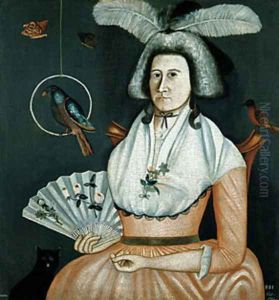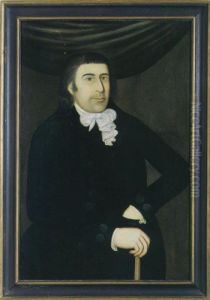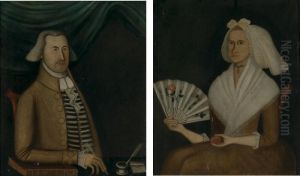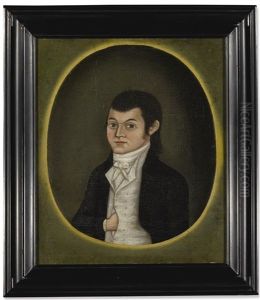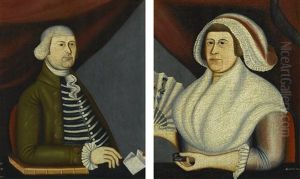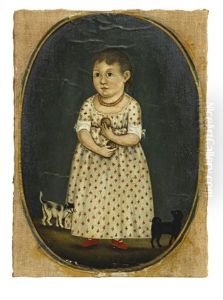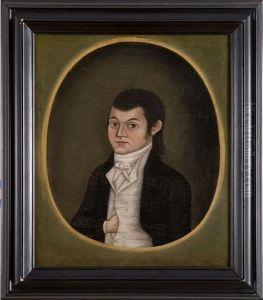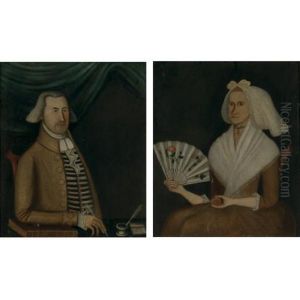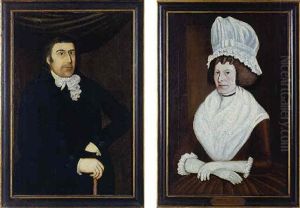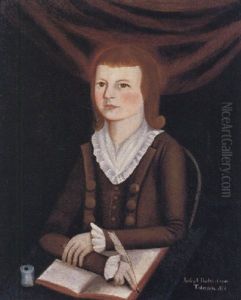Rufus Hathaway Paintings
Rufus Hathaway was an American artist, notably a painter and miniaturist, who was born in 1770 in Duxbury, Massachusetts. His work primarily spanned the late 18th and early 19th centuries, a period in American history that saw the establishment and early development of the United States as an independent nation. Despite working in what could be considered a provincial area far from the major artistic centers of the world, Hathaway managed to develop a local reputation for his portraits and miniatures.
Hathaway's artistic career was largely influenced by the scarcity of professional training available in the United States at the time. Like many American artists of his era, Hathaway was mostly self-taught, relying on European prints and the work of other artists as his sources of inspiration and technical understanding. He was also influenced by the itinerant artists who traveled from town to town offering their services, which was a common practice in the absence of established art schools or communities.
Around 1792, Hathaway may have spent time in the studio of American artist John Singleton Copley, who by that time had moved to London but left behind a strong influence on American portrait painting. However, there is no concrete documentation of an apprenticeship or formal study under Copley.
Hathaway's work is characterized by its delicate and detailed depiction of subjects, often capturing the likeness and fashion of America's burgeoning middle class. His miniatures, typically executed on ivory, are particularly noted for their fine brushwork and skilled use of color. These small portraits were personal keepsakes, valued for their intimate portrayal of loved ones in an era before the advent of photography.
The majority of Rufus Hathaway's artworks are portraits, which was the most popular genre among patrons in the United States at the time. His clientele was composed mainly of well-to-do merchants, sea captains, and their families in Massachusetts. Hathaway's ability to capture the character and status of his sitters made him a sought-after artist within his community.
Hathaway's life and work provide insight into the world of early American art, where artists were often self-made and their art was deeply intertwined with the social and cultural fabric of their communities. His portraits serve as a window into the early Federal period, reflecting both the styles of the time and the individual personalities of his subjects.
Rufus Hathaway passed away in 1822. Although he may not have been as widely known as some of his contemporaries, his contributions to American art are recognized through the survival of his works, which are held in various collections and museums, offering a glimpse into the early artistic heritage of the United States.
